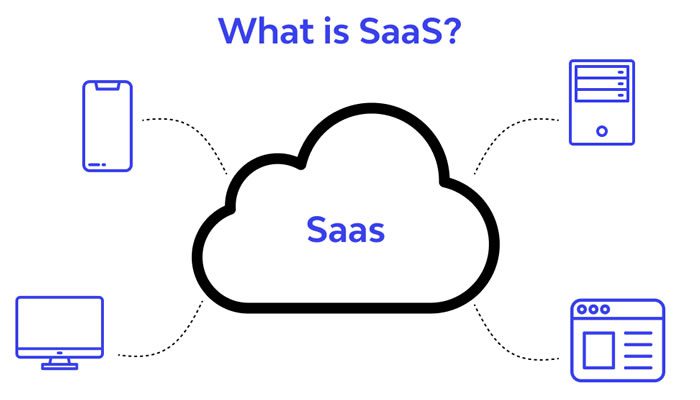The Rise of SaaS: How Cloud-Based Software is Transforming Business Operations
Over the last decade, the software industry has experienced a revolution with cloud-based software solutions becoming increasingly popular. Software as a Service (SaaS) has taken over and is transforming the way businesses operate. SaaS is not only cost-effective, and scalable but also readily available.
So What is SaaS?

Software as a service (SaaS) allows users to connect to and use cloud-based apps over the Internet. Common examples are email, calendaring, and office tools (such as Microsoft Office 365). SaaS provides a complete software solution that you purchase on a pay-as-you-go basis from a cloud service provider.
With SaaS, organizations can utilize cloud-based software on a subscription basis as opposed to building and maintaining their IT infrastructure. This has enabled small and medium-sized organizations to use complex business software without the need for significant capital investment. Cloud-based services have allowed for greater flexibility and mobility while enabling users to access their software solutions from anywhere provided they have an internet connection.
Businesses no longer have to worry about purchasing hardware and maintaining it as SaaS providers manage the cloud-based software for them. This is a significant advantage giving organizations the ability to focus on their core competencies instead of worrying about IT infrastructure. Furthermore, SaaS providers handle software updates, security, and even data loss prevention which further frees up resources in the organization.
The Advantages of SaaS: Enhanced Functionality, Scalability, and Cost Savings
One of the significant advantages of SaaS is its functionality. Businesses that collaborate with a reputable provider have access to cutting-edge software tools that can improve processes, enhance productivity as well as aid in decision-making.
Additionally, SaaS providers can offer customization for their clients by providing integrations with other software solutions used in the organization. This helps streamline processes and data management for the organization. Another compelling reason to choose SaaS is its scalability.
The business can upgrade or downgrade its subscription depending on its needs. For instance, increasing the number of users in the organization or adding new features to meet the increased demands of the business.
This means that a business will only pay for the services they require at any particular time, making it a more cost-effective solution compared to traditional software solutions where the business would have to purchase additional software licenses for expansion.
Harnessing the Power of SaaS: Tips for Successful Implementation and Integration
There are key considerations to implementing and integrating SaaS successfully. First, the organization must evaluate its software needs and select a service provider that meets its requirements. The SaaS provider must have a good reputation, establish security protocols, and comply with data protection and privacy regulations.
It is also essential to select a provider who provides technical support for the software solution, as well as adequate training for the organization's staff. Second, integration is the core of SaaS implementation. SaaS solutions must integrate with legacy IT systems used in the organization without any disruptions.
Before implementation, it is necessary to test the integrations between the on-premise systems and the cloud-based solutions to ensure minimal disruptions once the solution is deployed. In conclusion, the rise of SaaS has brought about changes in the software industry, providing a more cost-effective, scalable solution to business operations.
Wrapping-up
SaaS enables businesses to access cutting-edge software tools, collaborate with remote teams and attain a competitive advantage over their rivals. To effectively implement SaaS, it is necessary to assess the organization's software needs, find the right provider and integrate the software with existing IT systems. Embracing SaaS will allow businesses to enhance productivity, improve processes, and enable innovation with minimal capital investment.
